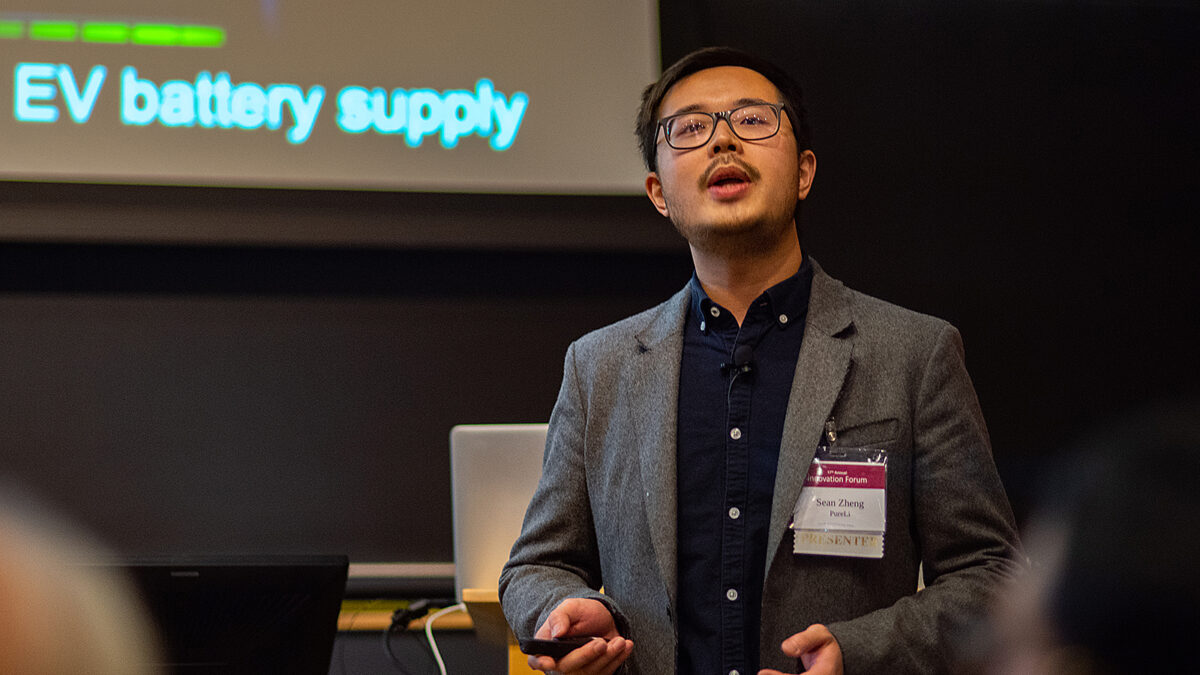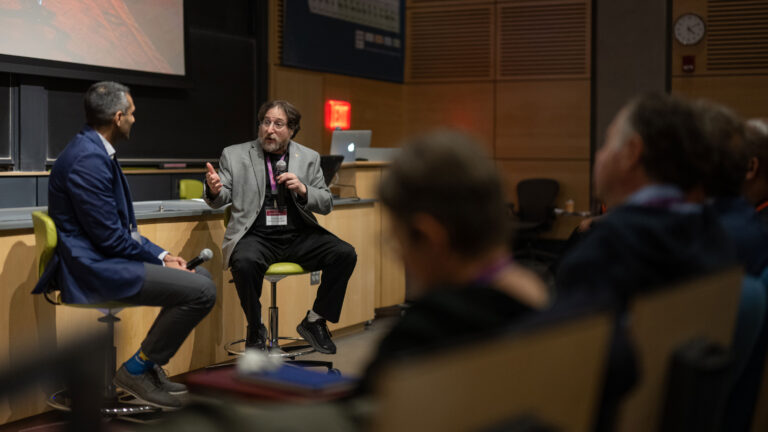
New lithium-extraction technology wins first prize at Innovation Forum
By Beth Jarvie
Technology that radically boosts industry’s ability to draw lithium from briny water won first prize at the 17th annual Innovation Forum in December.
The forum, conducted by the Keller Center for Innovation in Engineering Education, offers a showcase for Princeton faculty, researchers, and graduate students to present innovations that promise to deliver commercial, cultural and societal impact. Presentations are made in two divisions, one representing science and technology and the other humanities and social sciences. The awards total $60,000 in seed funding overall, with the top winners securing $15,000 in each division.
The 2022 winner in the humanities and social science category, MuseumVerse, presented a proposal to use virtual reality technology to allow small museums and cultural organizations the ability to reach worldwide audiences. The technology allows visitors to experience museums and works of art in ways that are not readily possible in typical presentations online. The presenters also said they planned to focus on smaller venues that did not have access to the technology available to large museums and cultural centers.
Sean Zheng, a postdoctoral research fellow at the Andlinger Center for Energy and the Environment, presented on behalf of the STEM winner, PureLi. The team, which includes Jason Ren, a professor of civil and environmental engineering and associate director for research at the Andlinger Center, uses solar energy to extract lithium from seawater. Current lithium production typically involves much more energy-intensive methods, and the PureLi team believes their approach could make lithium both less expensive and more environmentally friendly.

This year’s forum featured a conversation between the Keller Center’s Director Naveen Verma and Vice Dean of Innovation Craig Arnold. Both are founders of startups, and Arnold said his mission as vice dean is to help build bridges across campus and to smooth the way for Princeton innovators to deliver impact to the world.
“One thing about innovation that’s so critical to our mission as a university is how we connect with the world. You know, it’s about clearing the debris from the roads, filling in the potholes, and creating a superhighway so that our colleagues can excel,” said Arnold, the Susan Dod Brown Professor of Mechanical and Aerospace Engineering.
Other speakers included Nena Golubovic and Manish Bhardwaj, directors of the Keller Center’s newest initiative, the Design for Innovation Program. Bhardwaj, the co-founder of Innovators in Health, an organization that delivers healthcare to the rural population in India, reminded the audience of how the humanities can enrich peoples’ concept of innovation and how a humanistic point of view is fundamental in opening new channels and new ways of thinking. He said he hoped the Innovation Forum and Keller’s new program help faculty develop their ideas and translate them into real-world impact. “Let’s figure out what we can forge out of this intersection,” said Bhardwaj.
The event wrapped up with closing remarks from Andrea Goldsmith, the Dean of Engineering and Applied Science. She spoke of how the presenters embodied the innovative nature and spirit she hopes to foster as dean and how they demonstrate “how Princeton can make its unique mark to benefit humanity.”
This story originally appeared on the School of Engineering and Applied Science website.